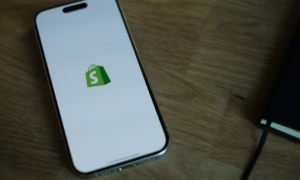Introduction
In the digital age, where art and innovation converge, Non-Fungible Tokens (NFTs) have emerged as a groundbreaking phenomenon. These unique digital assets have revolutionized the way we perceive ownership and authenticity in the online realm. Artists, musicians, game developers, and other creators are now leveraging NFTs to monetize their work and gain wider recognition. However, the rapid rise of NFTs has also raised complex legal questions, particularly concerning intellectual property rights.
Understanding NFTs:
A Digital Revolution
NFTs are distinct digital assets representing ownership or proof of authenticity of a unique item using blockchain technology. Unlike cryptocurrencies such as Bitcoin or Ethereum, which are fungible and interchangeable, each NFT is one-of-a-kind, making it impossible to replicate or replace. These tokens are stored on decentralized blockchain networks, ensuring transparency, security, and immutability.
Intellectual Property in the Digital Era
Intellectual property encompasses creations of the mind, including inventions, literary and artistic works, designs, symbols, names, and images used in commerce. Traditionally, intellectual property rights protect creators by granting exclusive rights to their inventions or creations. However, the digital era and the advent of NFTs have blurred the lines between the physical and virtual worlds, challenging existing legal frameworks.
Copyright and NFTs:
The Clash of Realities
Copyright law grants creators exclusive rights to their original works, preventing others from reproducing, distributing, or displaying their creations without permission. When it comes to NFTs, artists and content creators face a dilemma. While the token itself can be copyrighted, the underlying digital file – the artwork, music, or video – may not be as easily protected. This disconnect raises concerns about copyright infringement and unauthorized use, compelling legal experts to reassess existing regulations.
Trademarks and NFTs:
Preserving Brand Identity
Trademarks are crucial for businesses to protect their brand identity and prevent confusion among consumers. In the realm of NFTs, companies and artists must safeguard their trademarks from misuse. Unauthorized use of a trademark in an NFT could dilute the brand’s reputation or lead to counterfeiting. As a result, creators and businesses need to be vigilant, monitoring the NFT marketplaces to identify and address potential trademark violations promptly.
Patents and NFTs:
Encouraging Innovation
Innovation lies at the heart of patents, encouraging inventors to create new and useful products or processes. While NFTs primarily deal with digital assets, the technology behind them, particularly blockchain, continues to evolve. Patents may be sought for novel blockchain applications or NFT-related technologies, fostering innovation and ensuring legal protection for inventors in this rapidly changing landscape.
Navigating the Legal Challenges
As NFTs continue to gain traction, navigating the legal challenges surrounding these digital assets becomes imperative. Creators, investors, and collectors must seek legal counsel to understand their rights and obligations. Additionally, staying informed about the evolving regulations and industry best practices is essential to making informed decisions.
Conclusion:
Embracing Innovation while Respecting Rights
NFT tokens have undeniably transformed the way we perceive digital ownership and creativity. However, with great innovation comes great responsibility. It is crucial for creators, investors, and enthusiasts to respect intellectual property rights while embracing the potential of NFTs. By understanding the legal landscape and working collaboratively with legal experts, the digital community can foster a culture of innovation, creativity, and ethical practices, ensuring a harmonious coexistence between art, technology, and law in the digital age.


































